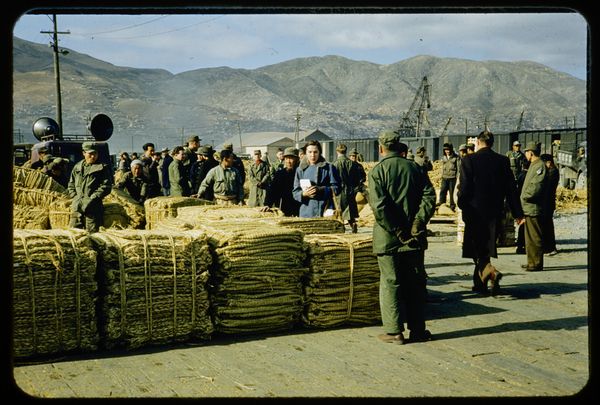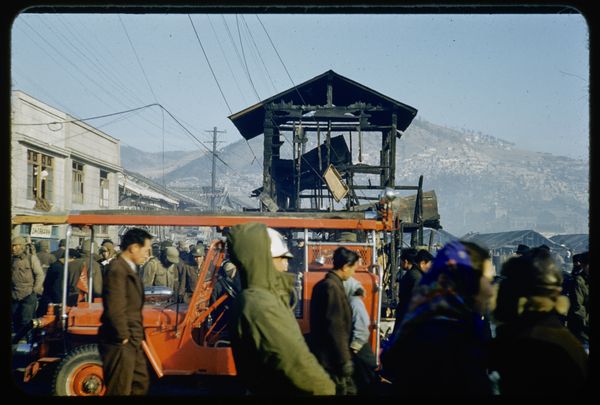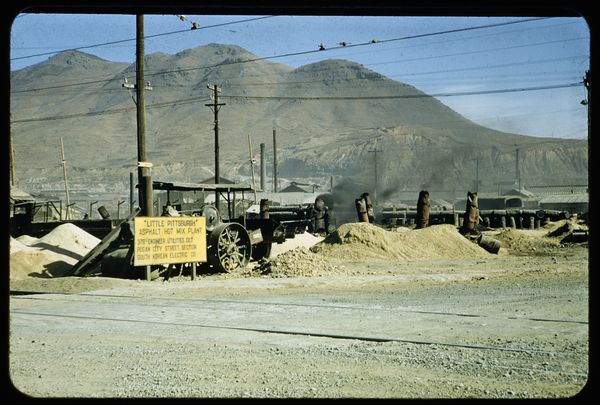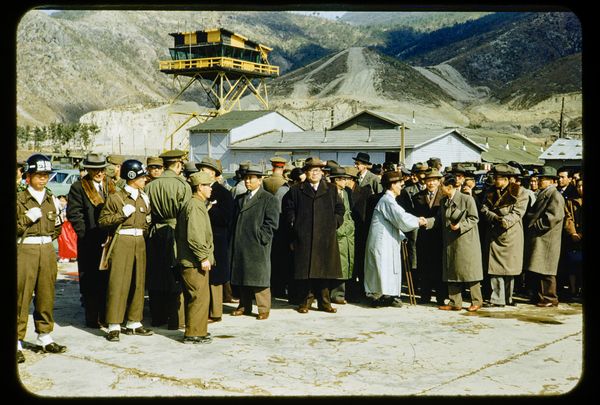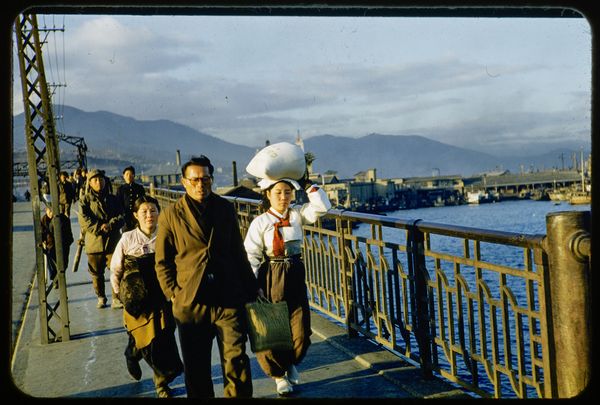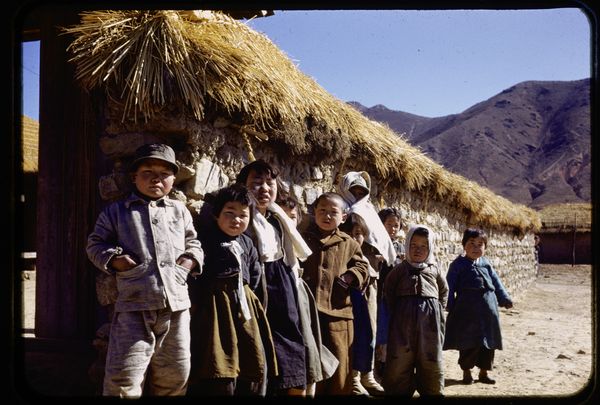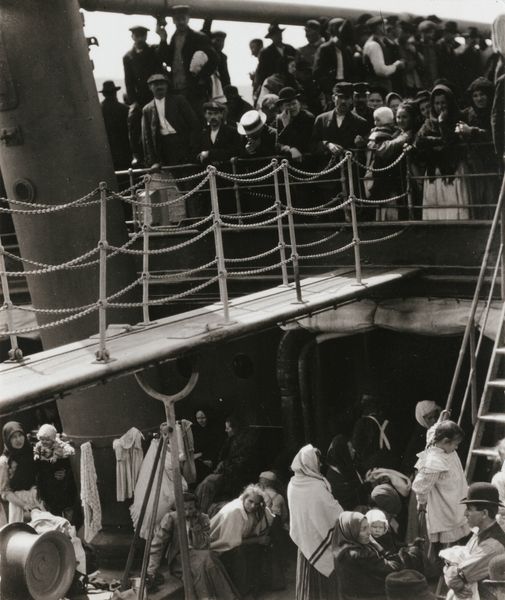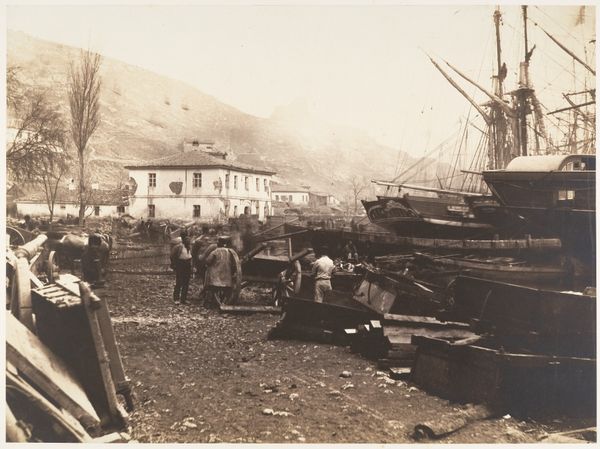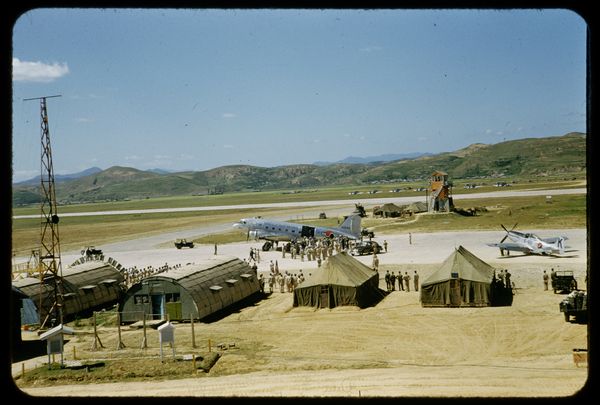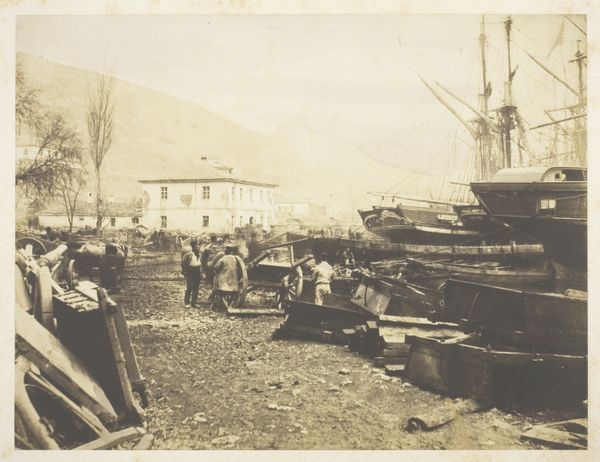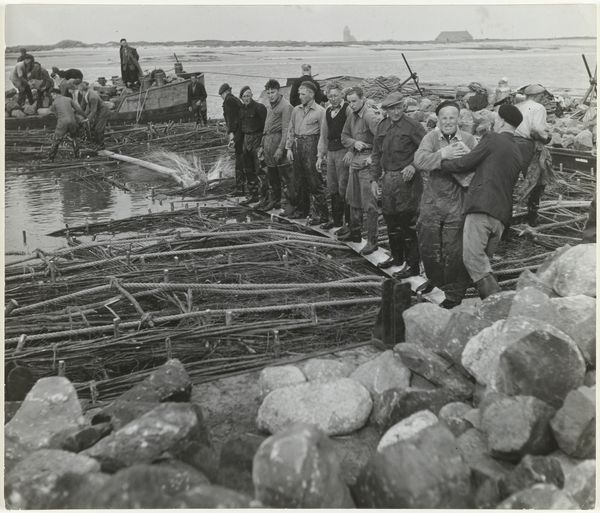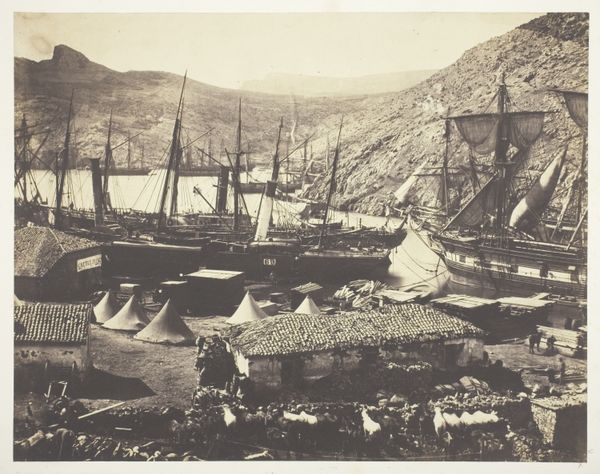
print, photography
#
portrait
# print
#
street art
#
asian-art
#
landscape
#
social-realism
#
outdoor photography
#
street-photography
#
photography
#
street photography
#
public art photography
Dimensions: height 5 cm, width 5 cm
Copyright: Rijks Museum: Open Domain
Curator: Looking at David Ketel's 1952 print, "Welkomstcomité voor het graanschip van UNKRA," now in the Rijksmuseum, I’m immediately struck by the air of quiet anticipation amidst the industrial landscape. Editor: It feels very staged, and even a little melancholic, despite being ostensibly about a welcome. You can almost smell the wood from the pier and the cargo stacked high on the left. It begs the question: what processes, what tangible goods, are moving through this space? Curator: Well, UNKRA, the United Nations Korean Reconstruction Agency, was crucial following the Korean War. This image likely depicts the arrival of a grain ship, part of the UN's effort to rebuild Korea. Editor: Absolutely, the agency’s presence looms large. The banner behind the women displays text in both English and Korean, further illustrating its global, yet intensely local, role. One thinks about how something like 'grain'—such a basic element—was being produced, packaged, and distributed on a massive scale. What kind of labor was involved? Curator: And consider the historical context! The devastating impact of the war, the subsequent reliance on international aid, the politics inherent in that aid—it’s all condensed into this one moment. Notice also, the women’s traditional dress juxtaposed against the modernity of the ship and the truck; there's tension there. Editor: Indeed. Are those empty chairs placed deliberately, an invitation to some undefined audience? The bare landscape rising in the background, the solid yet worn dock stretching beneath. These all speak to the intersection of progress and hardship. Who arranged these details and what kind of material conditions defined those actions? Curator: The formal arrangement contributes to a sense of a society in transition. This photo exists in a unique historical point. Editor: Exactly. By tracing these kinds of histories of distribution, we can find our way to the individuals touched, in a visceral, material way, by this moment in Korean history. Curator: It’s a stark visual document of a complicated moment, reminding us of art’s capacity to be both beautiful and deeply embedded in history.
Comments
No comments
Be the first to comment and join the conversation on the ultimate creative platform.
